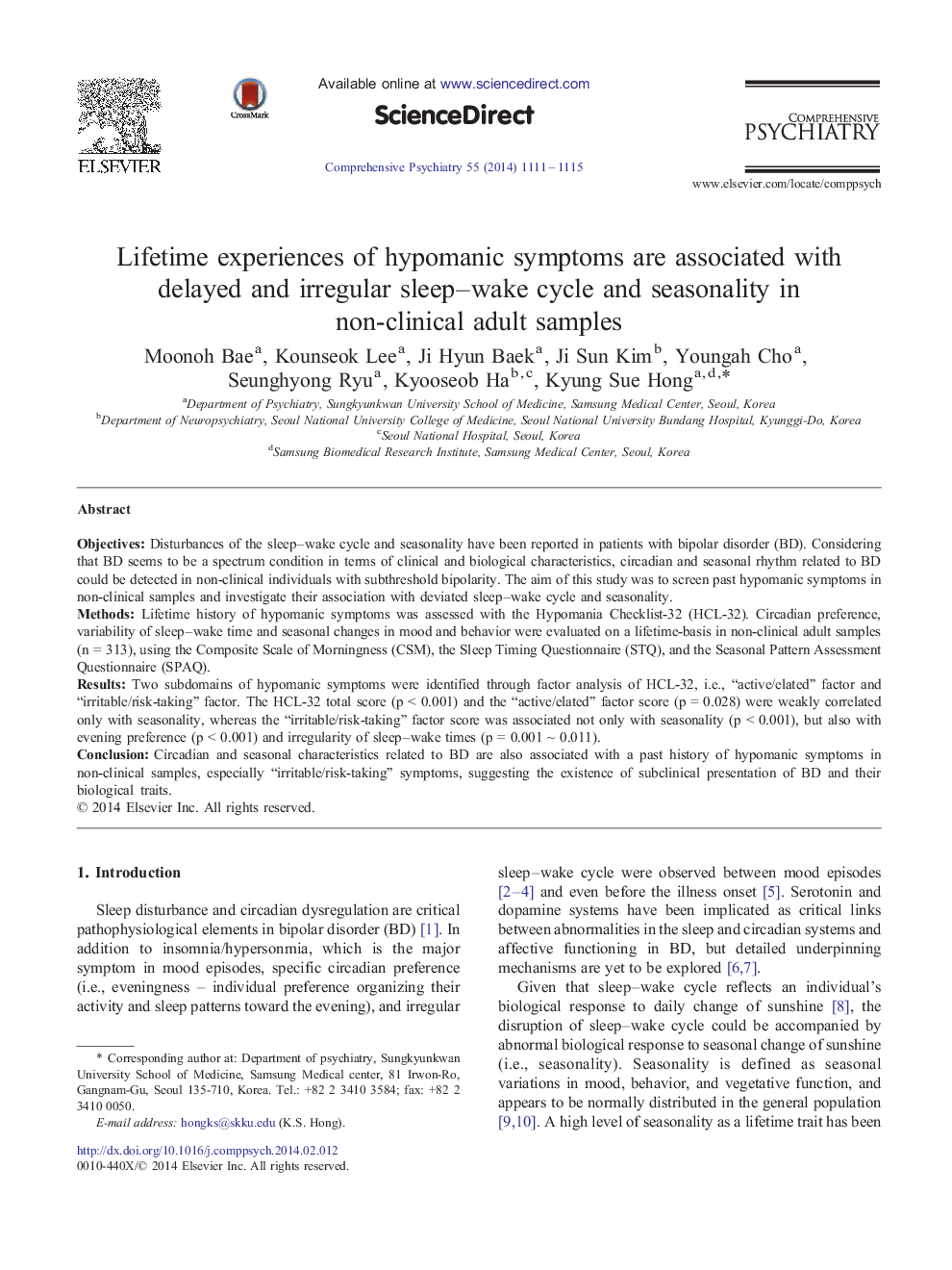| Article ID | Journal | Published Year | Pages | File Type |
|---|---|---|---|---|
| 316332 | Comprehensive Psychiatry | 2014 | 5 Pages |
ObjectivesDisturbances of the sleep–wake cycle and seasonality have been reported in patients with bipolar disorder (BD). Considering that BD seems to be a spectrum condition in terms of clinical and biological characteristics, circadian and seasonal rhythm related to BD could be detected in non-clinical individuals with subthreshold bipolarity. The aim of this study was to screen past hypomanic symptoms in non-clinical samples and investigate their association with deviated sleep–wake cycle and seasonality.MethodsLifetime history of hypomanic symptoms was assessed with the Hypomania Checklist-32 (HCL-32). Circadian preference, variability of sleep–wake time and seasonal changes in mood and behavior were evaluated on a lifetime-basis in non-clinical adult samples (n = 313), using the Composite Scale of Morningness (CSM), the Sleep Timing Questionnaire (STQ), and the Seasonal Pattern Assessment Questionnaire (SPAQ).ResultsTwo subdomains of hypomanic symptoms were identified through factor analysis of HCL-32, i.e., “active/elated” factor and “irritable/risk-taking” factor. The HCL-32 total score (p < 0.001) and the “active/elated” factor score (p = 0.028) were weakly correlated only with seasonality, whereas the “irritable/risk-taking” factor score was associated not only with seasonality (p < 0.001), but also with evening preference (p < 0.001) and irregularity of sleep–wake times (p = 0.001 ~ 0.011).ConclusionCircadian and seasonal characteristics related to BD are also associated with a past history of hypomanic symptoms in non-clinical samples, especially “irritable/risk-taking” symptoms, suggesting the existence of subclinical presentation of BD and their biological traits.
